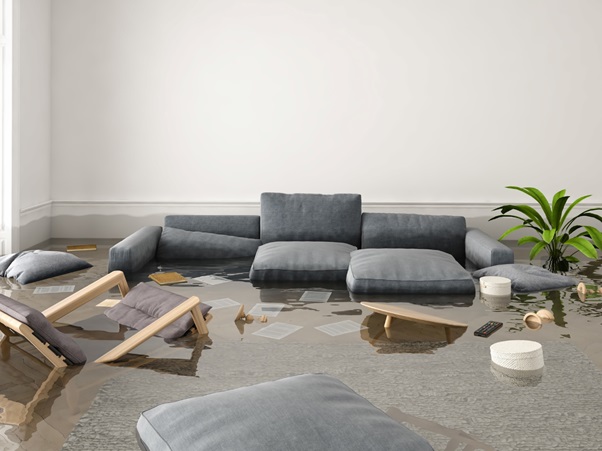When it comes to home-related damage, fire and water can wreak the most havoc on your property.
Dealing with a flood is not only traumatic, but it can also cost you quite a lot of money, stress, and time if you don’t know how to handle the aftermath.
Read on to learn about what to do if your house floods, so you can be ready for whatever comes your way.
My House is Flooded: What Do I Do?
If you return to a flooded home, the first thing you should do is confirm that it’s safe to enter. Before you go inside, find your home’s electrical panel and turn off the main just to be safe.
Walking into a flooded house while the power is on can be extremely dangerous. You should also pay close attention to the structure itself to make sure that it hasn’t weakened or else you may fall through the floor or get injured.
After you’ve confirmed that you can safely go inside, start by taking as many photos as you can of the damage. You’ll need these photos later when you file your insurance claim, so make sure you get as many pictures as possible. Take photos of your damaged belongings as well as the structure of the home itself, flooring, ceilings, and more.
Once you have all of the photos you need, you may need to contact your local fire department or building inspector. They’ll need to confirm whether or not the home is safe for occupancy or whether it needs to be temporarily off-limits.
After you do these things, contact your insurance company right away and let them know what happened. You’ll need to file a claim as soon as possible so you can be compensated and start making the necessary repairs. If you run into any issues, this lawyer or another lawyer in your area may be able to help with your claim.
What to do if Your House Floods: Get Water Out ASAP
Check with your insurance company to confirm that it’s OK for you to start removing water from the home. Use a sump pump to help pump excess water out faster. You can find these tools at most home supply stores and they typically cost between $150 and $500.
In addition to the sump pump, you’ll also need a heavy-duty wet-dry vac to suck up excess water from the floors and furniture. While you’re removing the water from your home, open all of the doors and windows to keep fresh air circulating. Ventilation will also help the inside dry out a bit faster.
You’ll also need to remove furniture, clothing, and other belongings that have gotten soaked. These items can start to grow mold quickly and can make an already stressful problem worse.
Be Proactive About Mold
As you think about what to do if your house floods, keeping mold at bay should always be one of the top priorities. In fact, mold can start to grow and spread in just 24 to 48 hours after a flood.
Remove carpet and carpet padding, wet furniture, and anything else that may have stopped up water like a sponge. As you go, take photographs of each item so you can be compensated later by your insurance company.
Some items might be salvageable if they can be cleaned and sanitized. Area rugs can be saved if you take them to a professional cleaner, but the furniture will likely need to be discarded and replaced with something new later.
You can combat mold growth by cleaning the surfaces in your home with a non-ammonia detergent and a 10% bleach solution. Never mix bleach with anything that contains ammonia, as it will create extremely dangerous and toxic fumes.
Don’t forget to photograph things like your drywall and baseboards so the insurance company can see how high the water got inside your home. The best flood insurance will pay for a company to come out and help you dry things out, remove flooring, and start working to fight the mold.
Are You Covered?
It’s important to note that not all homeowner’s insurance policies cover flooding, depending on the cause. If you are in a region that has been officially declared a disaster area, you’ll have more access to resources like FEMA and the Red Cross for help.
If the flooding was caused by burst pipes or a broken appliance, the insurance should cover it. However, if you live in a designated flood zone, you will need to have a separate flood insurance policy. You can find out more from the National Flood Insurance Program, which offers separate coverage if you live in a high-risk zone.
Filing a claim for a flooded house can be tricky if you don’t know whether you’re covered. Always consult with your insurance company first and then talk to an attorney if you feel that your claim is valid but has been denied.
FEMA may also be able to provide you with some financial assistance if the flood is a result of a major storm or other natural disasters. Make sure you use all of your resources to get the help you need so you can repair your home and return to normal.
Flood Recovery is Possible
Once you know what to do if your house floods, you’ll be much better equipped to deal with the aftermath. Make sure you have a quality insurance policy and determine if you need additional, separate flood insurance so you can recover your home and belongings as fast as possible.
For more great articles about business, tech, travel, and more visit our website today!

